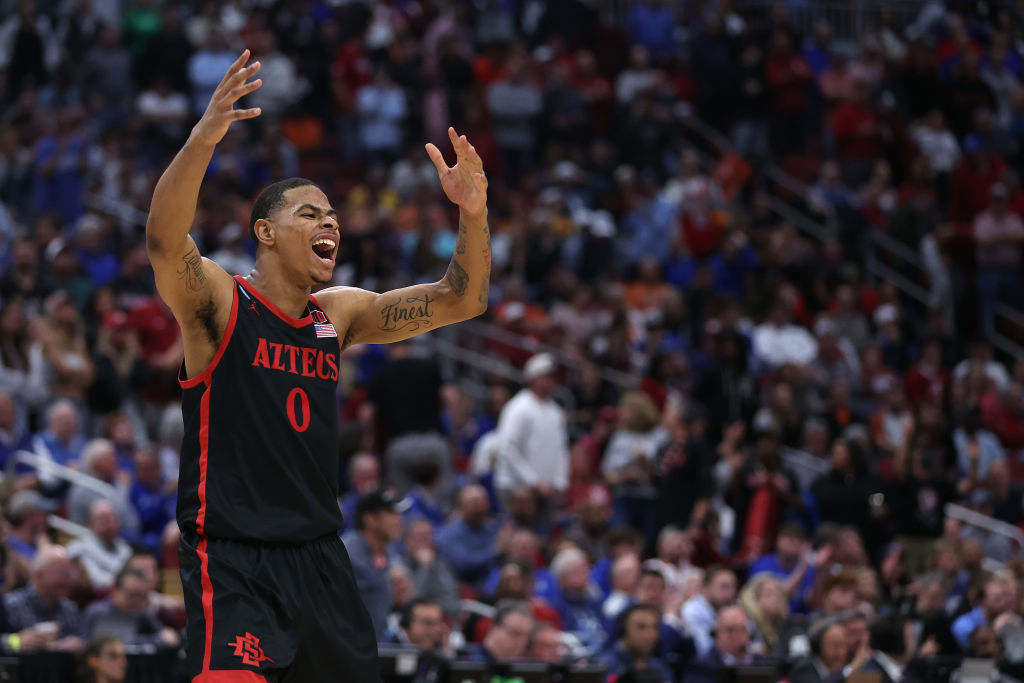March Madness markets itself on the chaos, the unpredictability, and the Cinderella stories that make the NCAA basketball tournament one of the most beloved sporting events in America.
Most years, the really shocking upsets are usually out of the way by the end of the first weekend. By the time the tournament reaches its most critical rounds, fans are fortunate if there is a single Cinderella still dancing.
Over the last thirty tournaments — I would say years but the 2020 tourney was canceled due to Covid — only two national champions have started the tournament as lower than a three seed. In that same span, only two Final Fours did not feature a one seed, while thirteen Final Fours over the past three decades have contained multiple one seeded teams. The 2008 Final Four was especially notable for its chalk: all four were the top seed in their region.
That makes the 2023 edition of the Final Four noteworthy since it features three schools making their first appearance this late in the tournament, as well as no participant seeded higher than #4, a first since the tournament began seeding teams in 1979. This tournament has also seen only the second instance of a #16 seed upsetting a #1 seed, as Fairleigh Dickinson toppled number one seed Purdue in the East region.
Then again, in addition to underdog Final Four first-timers Florida Atlantic, San Diego State and Miami, there is the University of Connecticut, a school consistently good enough that fans and pundits often debate whether the Huskies should be considered a “blue blood,” a member of college hoops royalty. That UConn is just a #4 seed this year, and that the school is making its first Final Four appearance since 2014, is enough that some are attempting to lump the Huskies in with the outsiders. It’s a neater narrative that way. Yet when a school is tied for the fifth most championships in men’s college basketball, you have to squint pretty hard to see them as anything other than the old guard’s best shot at reasserting dominance.
The Huskies are quickly establishing themselves as the big, bad favorites of those left. And it’s not just history and brand recognition — UConn has won each of its four games in this year’s tournament by fifteen points or more. Miami is the only other team remaining with multiple double-digit margin wins, except their other two games were decided by nine points or fewer. UConn’s twenty-eight-point defeat of third-seeded Gonzaga in the Elite Eight was the Bulldogs’ worst loss in the school’s sixty-nine tournament game history. Gonzaga entered Saturday averaging a nation-leading eighty-seven points per game, only for Connecticut’s defense to hold them to a season-low fifty-four points on a dismal 2-of-20 shooting from three.
So UConn is shaping up to be a formidable favorite, yet it would be foolish to discount the other three as happy-to-be-there cannon fodder. San Diego State’s defense and depth flustered Alabama, the top-ranked team in the tournament, with an approach that stresses constant veteran rotation over depending on a few stars with heavy workloads.
With Miami, coach Jim Larrañaga is making his second stint as Final Four spoiler. In 2006, he guided #11 seed George Mason to a spot in the national semifinal, beating UConn in the Elite Eight to advance there. After taking the Miami job in 2011, he helped the program take quick strides toward respectability. Two years later, the Hurricanes won their first ACC tournament and advanced to the Sweet Sixteen. Larrañaga nearly got his second Final Four berth last year, though Miami was turned away in the Elite Eight by eventual national champion Kansas.
The core of that Miami squad returned for this season, joined by a few talented transfers, and has been determined to take that next step. Since overcoming a late deficit with a 16-1 run in their first-round victory over Drake, Miami’s offense has rarely sputtered. They were down thirteen to Texas with twelve and a half minutes to play, then hit the gas and left the Longhorns in the dust 37-17 the rest of the way.
Rounding out the field is the longest of the long shots, Florida Atlantic, which entered this season having been to just one previous NCAA tournament and having notched exactly zero tournament victories. The Owls became the ninth team seeded nine or lower to reach the Final Four, though as Larranaga can tell you, none of those previous eight teams was able to win the semifinal game to advance to the national championship. If Florida Atlantic faces tall odds, they haven’t buckled under pressure yet in this tournament, as they have lived and thrived off of second-half runs when trailing.
Those in the know will tell you that Florida Atlantic’s run is not a fluke and their underdog status this year has more to do with a lack of recognition than reality. That may be so, but either way, these schools have accomplished a great deal this season. Yet there is a world of difference between being the ninth team to do something and the first in that group to win it all.

























